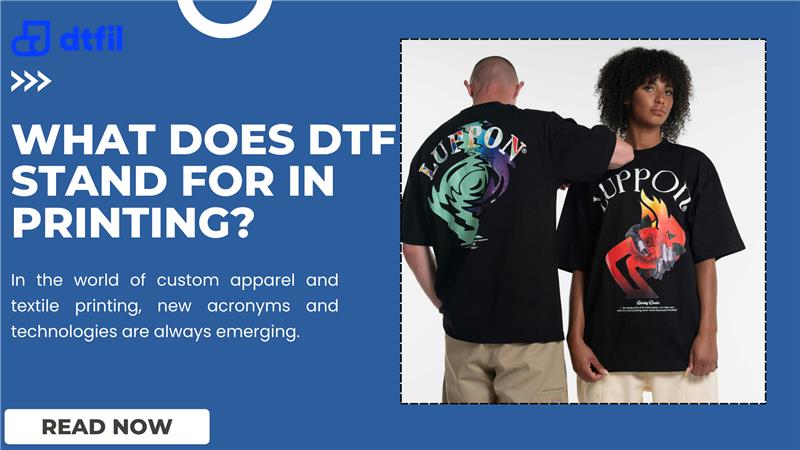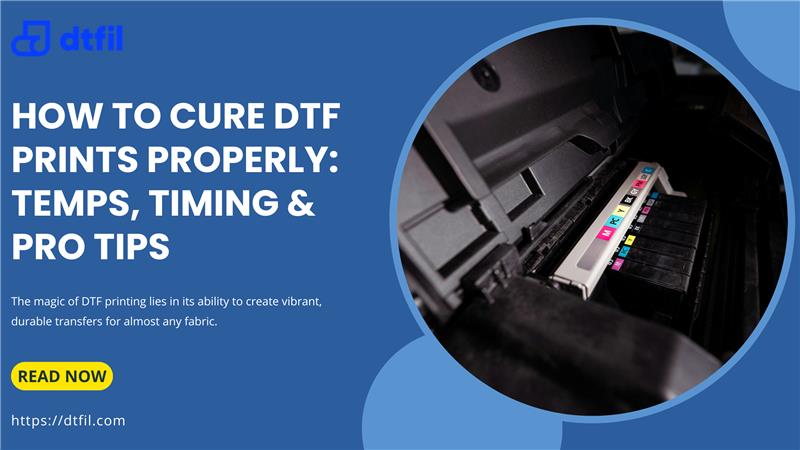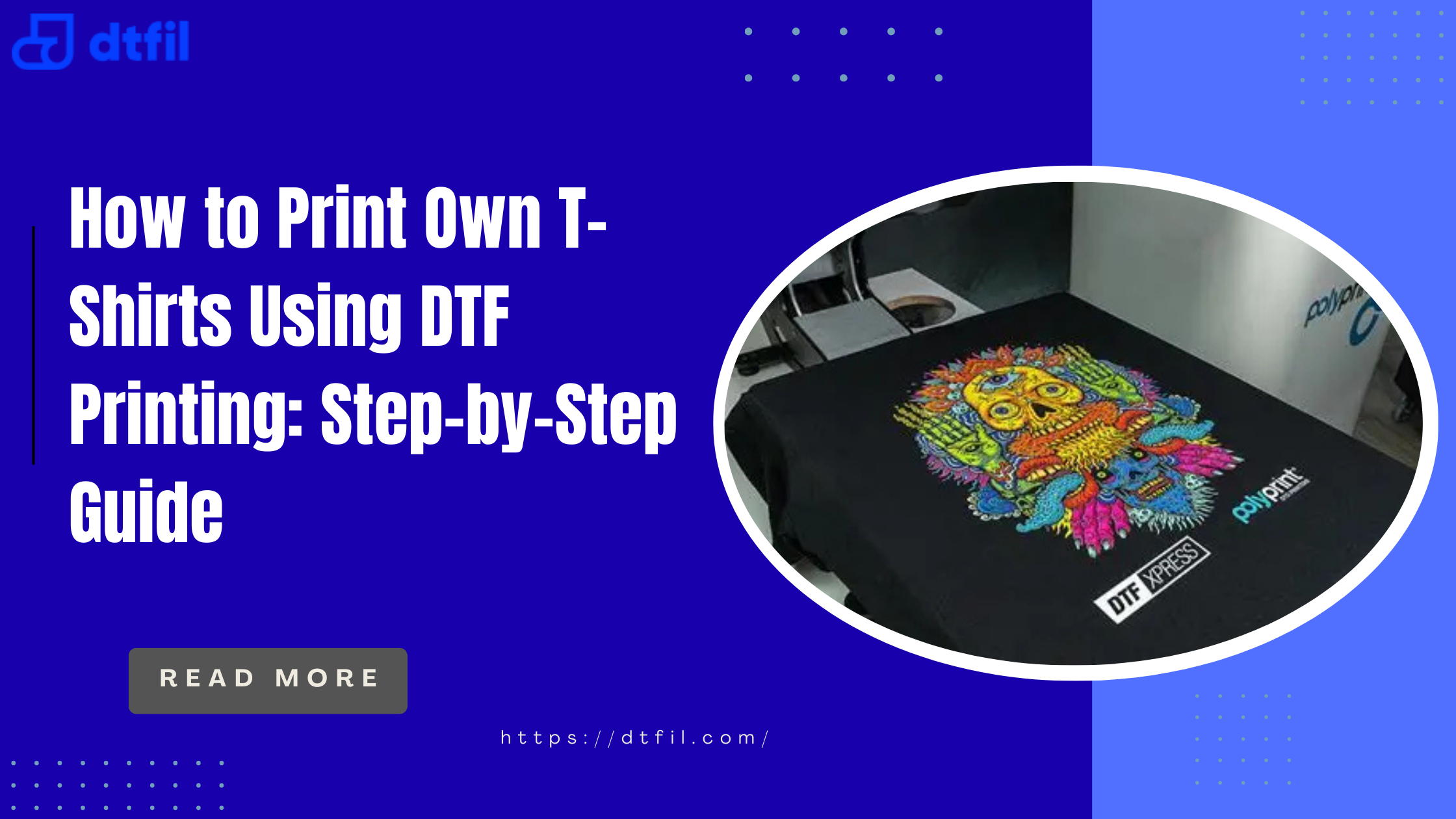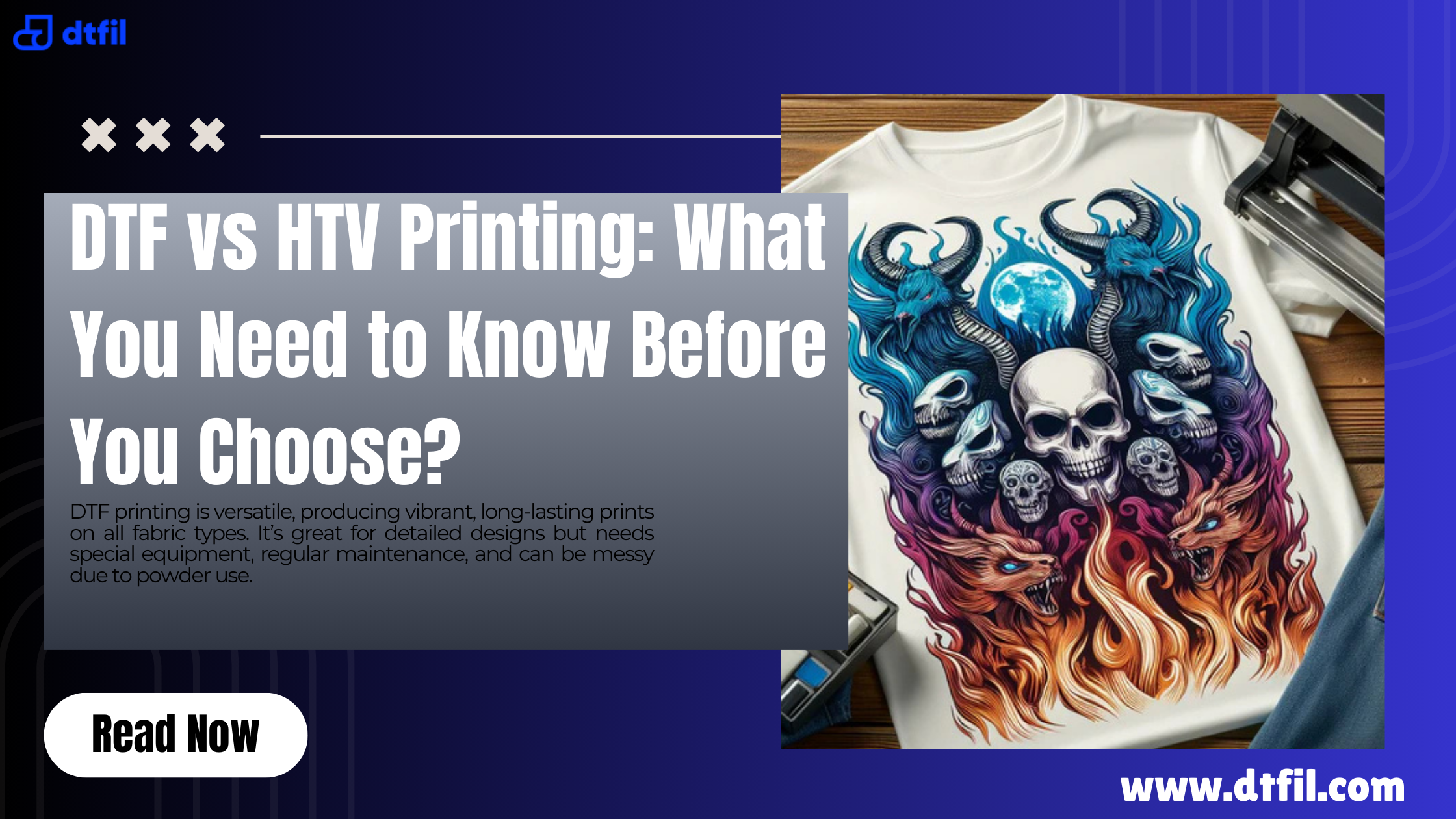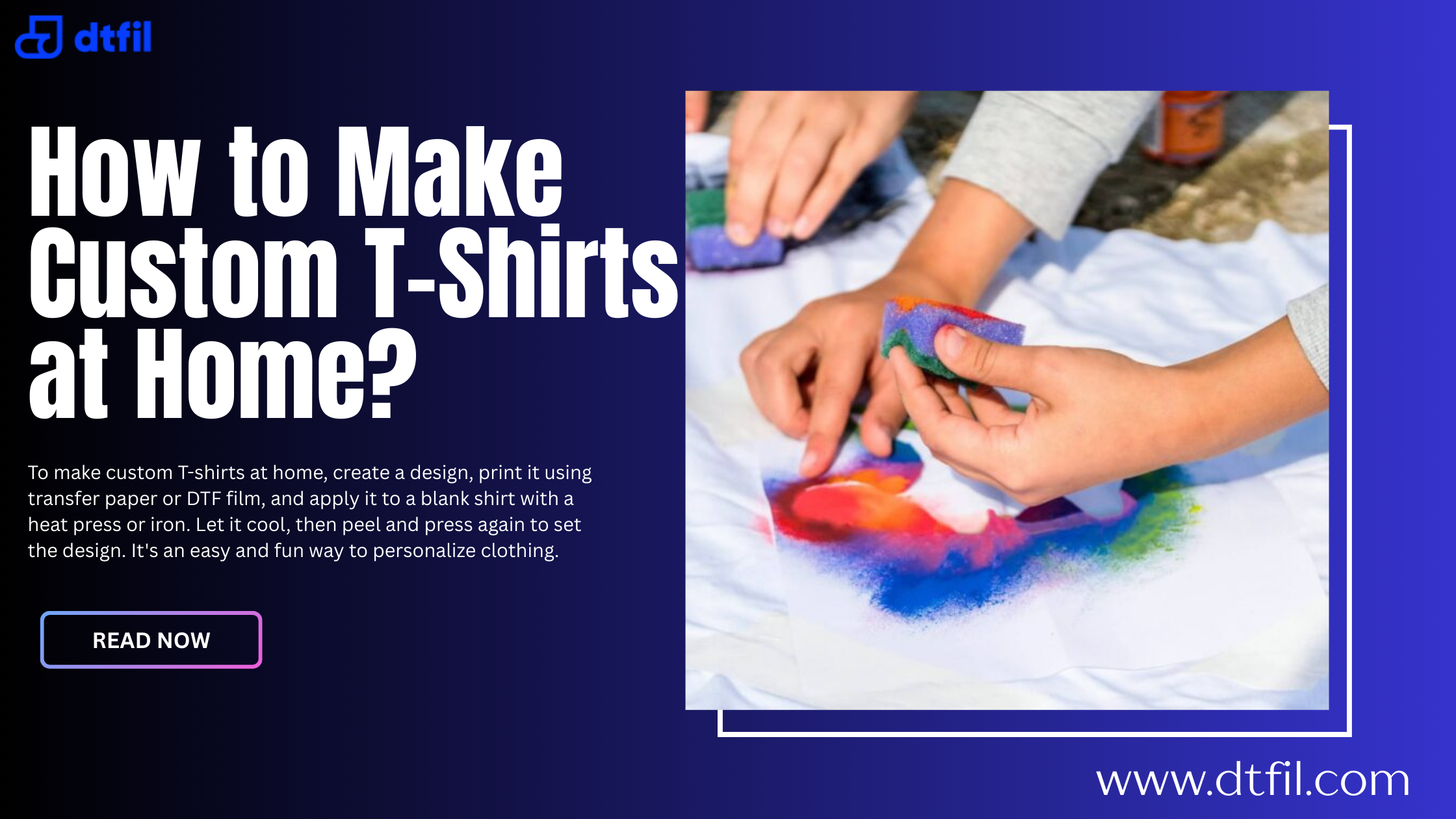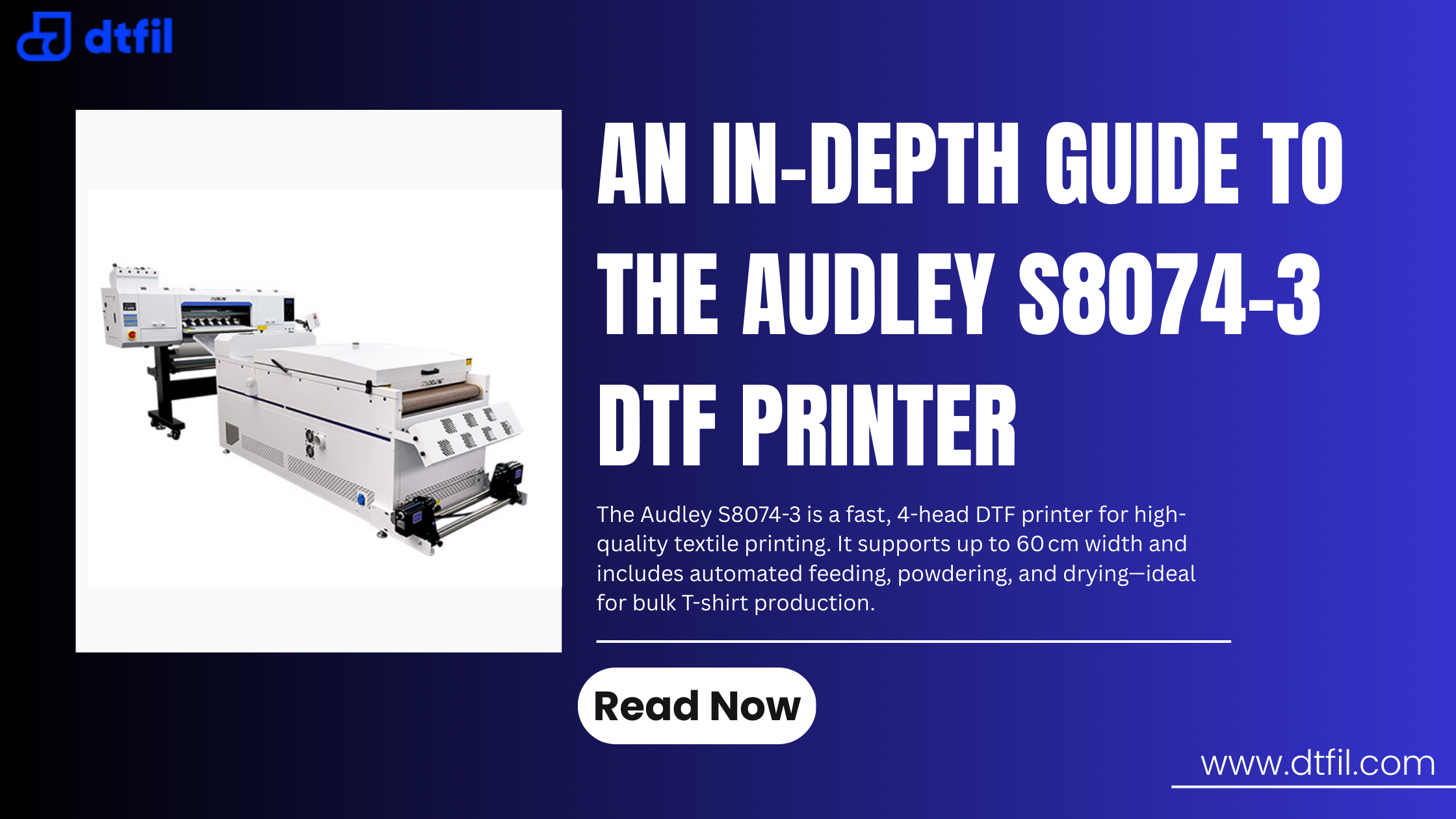Innovation plays a pivotal role in driving efficiency and fostering originality within the ever evolving custom clothing industry. Among the latest advancements, DTF (Direct-to-Film) transfers have emerged as a groundbreaking technology, revolutionizing the way custom designs are created and applied. But, what are DTF transfers and how is the fashion industry reacting to them?
Direct-to-Film (DTF) transfers are a state-of-the-art printing technique that combines affordability, quality and adaptability. This method allows intricate designs to be transferred directly onto textiles with stunning clarity, revolutionizing the way clothing is personalized.
Curious to know what does DTF transfer mean and what are DTF transfers made of? Let’s take a closer look into the details of this game-changing technology!
What are DTF Transfers?

Direct-to-film transfer or DTF for short, is a new generation of customized printing procedures. DTF transfers allow you to print your patterns on a film that can be heated to transfer them to clothing which sets them apart from traditional transfer methods.
These designs are transferred on the film in reverse and they are easily transferable to different fabrics including blends, cotton, polyester and even dark materials. Because of these special qualities, DTF has become one of a kind for custom printing companies.
What is DTF Printing?
Direct-to-Film (DTF) printing is an exciting new technique for printing vivid, best-quality images on a range of garments. It prints a design onto a specific film, covers it with adhesive powder and then heat presses it onto the garment.
DTF printing, in contrast to conventional Direct-to-Garment printing, can be done on dark fabrics, polyester, cotton and blends. What is DTF printing? Even other printing techniques are finding it challenging to keep up with the growing popularity of this contemporary process.
Also Read: How Much is a DTF Printer? Exploring Price vs. Performance
Steps Involved in the Process of DTF Transfers

The procedure consists of several key steps to apply DTF transfers:
- Design: Start the DTF printing process by creating or importing your design into software like Adobe Photoshop or Illustrator. Adjust the colors, size, and orientation as needed.
- Printing: The design is printed in reverse on transfer film using a DTF printer, ensuring it appears correct when transferred to fabric.
- Adhesive powder: After printing, a special adhesive powder is applied to the design, ensuring it bonds securely to the fabric during the heat press process.
- Curing: The printed design, coated with adhesive powder, is placed in a curing oven where the powder melts and adheres to the ink.
- Transfer on the garment: The fabric is aligned with the DTF transfer film, and heat and pressure are applied using a heat press.
- Peel off: Once the film cools, it is peeled away, leaving the vibrant design firmly attached to the fabric.
Difference between DTF Transfer and UV DTF Transfers
DTF Transfer and UV DTF Transfers differ in both technology and applications. DTF Transfer uses DTF inks printed onto a film, which is then transferred to fabric with heat, making it ideal for textiles like cotton and polyester.
On the other hand, what is UV DTF Transfer involves UV-cured inks that are hardened under UV light, allowing it to be used on both fabric and hard surfaces like metal, wood, and glass. While DTF Transfer is best for soft materials, UV DTF Transfers provide greater versatility and a more durable and scratch-resistant finish.
Also Read: DTF Care Instructions: Washing, Pressing, and Temp/Time Guidelines
Advantages of DTF Transfers
DTF transfers are quite common in the custom printing industry because of their many advantages which include but are not limited to the following. Let's examine the main benefits:
- Cost-effective result: DTF transfers are cheaper than other printing methods, especially for short and small bunks.
- Best-quality prints: These transfers deliver exceptional print quality with sharp details and vibrant colors, ensuring your designs stand out.
- Customizing options: DTF transfers provide flexibility in customization, allowing you to print personalized designs, names, numbers or even photographs on garments.
- Adaptability and versatility: Whether you need prints for t-shirts, hoodies or other textiles, DTF transfers can adapt to various fabric types and deliver consistent results.
- Fast turnaround time: With DTF transfers, you can enjoy fast production times, allowing you to fulfill orders promptly and meet tight deadlines.
Also Read: DTF vs Sublimation & Other Printing Methods
Conclusion
DTF transfers are the future of personalized clothing because they provide unparalleled durability, flexibility and color replication. Designers and companies can produce high-quality, durable prints on a variety of garments by using DTF transfers.
Turn your apparel ideas into reality with DTFIL. From intricate designs to vibrant colors, our DTF printing services offer the perfect solution for custom clothing. Begin your design journey today and stand out with every piece!
FAQs
Is DTF better than sublimation?
DTF is considered better than sublimation as it can be used on a wider range of fabrics including cotton, polyester and blends, while sublimation is limited to polyester or polyester-coated fabrics. However, both techniques can produce high-quality prints with vibrant colors.
How long do DTF transfers last?
DTF transfers last typically 50-100 washes, depending on the quality of materials, fabric type, care routine and environmental factors, with proper care and maintenance extending their lifespan.
Is DTF better than vinyl?
DTF is generally better than vinyl heat transfer in terms of production, efficiency, design complexity, and durability offering unmatched detail, superior wash resistance and a wider range of applicable materials, although it requires a higher initial investment.
What is the disadvantage of a DTF printer?
The disadvantage of a DTF printer is indirect printing that requires a separate film transfer process which involves extra steps and potentially increases production time and costs.


